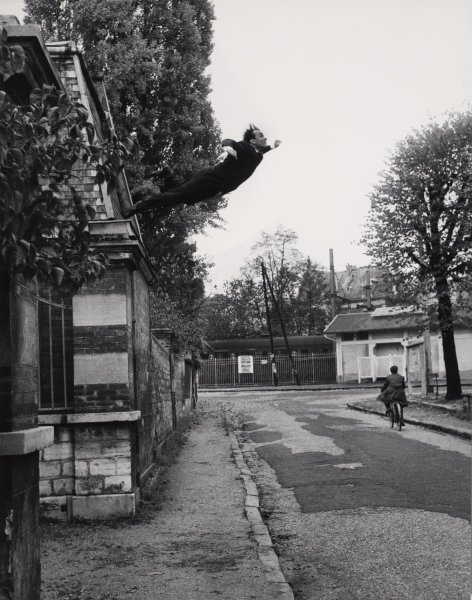In my view, it is almost always the case that a picture comes down not to what is contained in it but how the viewer interprets it. This relies upon; context – what previous knowledge the viewer may have surrounding the background of the image/its subject/s; personal background – as we know that this impacts every element of a person’s experience and choices; and connotational aspects – how the human brain has the ability to connect multiple things to each other at once, triggering specific emotions or memories through imagery or sensory experience. This interpretational nature of photography is, in essence, what secures it as an art form and makes it entirely accessible.
I am going to analyse the statement, ‘photographs confuse as much as fascinate, conceal as much as reveal, distract as much as compel. They are unpredictable communicators.’, from David Campany’s work On Photographs. This quote is interesting because of its use of oxymoronic language. This gives the subject (photography) far more depth than one may have originally established and this is what creates the talking point.
When Campany says that photographs ‘confuse as much as fascinate’, he is possibly referring to the inevitability of captivation – oftentimes when one views an image it will fade from memory almost immediately; imagine how many images we see in a day, but there are a few occasions when an image will be entirely consuming in its attraction and mesmerism. Sometimes, when this occurs, we are unable to draw away from the image, consistently returning to its beauty/mayhem/gore/nostalgia – I think nostalgia is the most important here as it is often this which triggers the mind and evokes such emotions as sadness, joy or wistfulness to an overwhelming degree. Photographs can confuse as they may force the viewer to confront their content and also question something they believed in previously – as, after all ‘the camera never lies’ can sometimes be true.

The phrase ‘conceal as much as reveal’ is interesting as it alludes to the ongoing presence of media that shows false imagery – media which is consumed by all of us. There are so many examples of this, and one may find themselves constantly questioning what they thought they knew or had seen evidence of. Whilst alluding to this negative aspect of photography, the statement also shows that photographs have always and will always be used to document and broadcast – they allow us to reach across continents to access common experience and reference as a human race. This is arguably the most important role of photography due to its capacity to allow us to connect and also ask for help from one another.

To ‘distract as much as compel’ is important because this is what allows us to escape through the use of images. To ‘distract’ ourselves through the medium of photography is to see things in a new manner and discover new perspectives. To ‘compel’, an image must galvanise the viewer – make them so acutely aware of their own emotion that they believe they must act upon it – or, if not act then just continue to enjoy the image.

Photographs are named as ‘unpredictable communicators’. This is perhaps due to the adaptability of the human mind – we are programmed to take what we are given and make it comprehensible and relatable to our own thoughts and views. However, as discussed earlier, photographs are quite good at challenging this aspect of our nature and they often force us to confront personal barriers or beliefs. One should always be reminded of the need to believe only what we know is certain, and always to question that which we believe is certain, and always be aware of the fact that a photographer’s job is always to make their subject seem a certain way – every single part of the shoot will be directed towards this intention and therefore it will always be achieved, and we will always view an image that has been calculated very thoroughly. Perhaps a good example of this is the use of propaganda during fascist eras in European countries. The imagery used will always be chosen based on its factor of admiralty and inspiration – the purpose is always to ensure the subject appears strong and capable.

The above image is an interesting example of this principle. We can see a man falling from a second-storey window, whilst another person cycles by. This is a piece of performance art produced by the famous performance artist Yves Klein, famous during the 1960s. The image is actually a photomontage made up of two images taken at different times and merged together. This is shown here:

Yves Klein has created an image of himself leaping from the building ‘into the void‘. A void is an absence, a space created by lack of presence. As photographs are only snapshots – frames caught in a split-second – they do not allow us as the viewers to know what happened prior to or after the photo was taken. Therefore the image only draws our attention as viewers because we know that he cannot have photographed this as it is shown without injury. This creates a desire to investigate the story behind the image, which is perhaps the purpose of this intriguing technique. Additionally, drawing on the time the image was created, one could possibly link its illusion of freedom to the current socially turbulent era and all its numerous social and political movements including the civil rights movement, the student movement, the anti-Vietnam War movement, the women’s movement, the gay rights movement, and the environmental movement. This links to my earlier point – that a viewer’s interpretation of an image will rely upon context just as much as content.
Therefore, as a whole, I think that photography is many different things all at once, and is always down to interpretation on behalf of the viewer and their personal experiences. Often, the images we remember the most are the ones with a story behind them.
